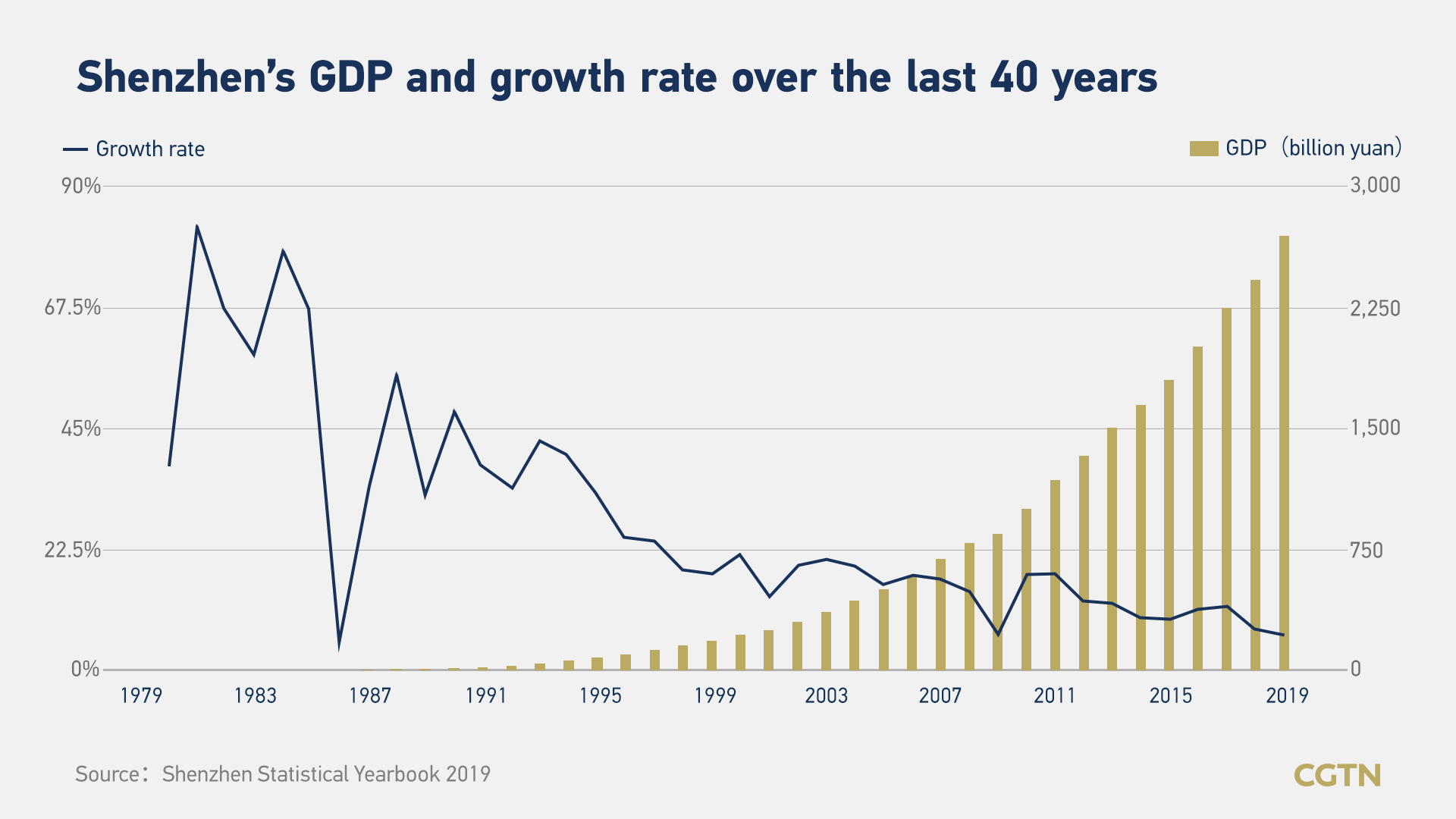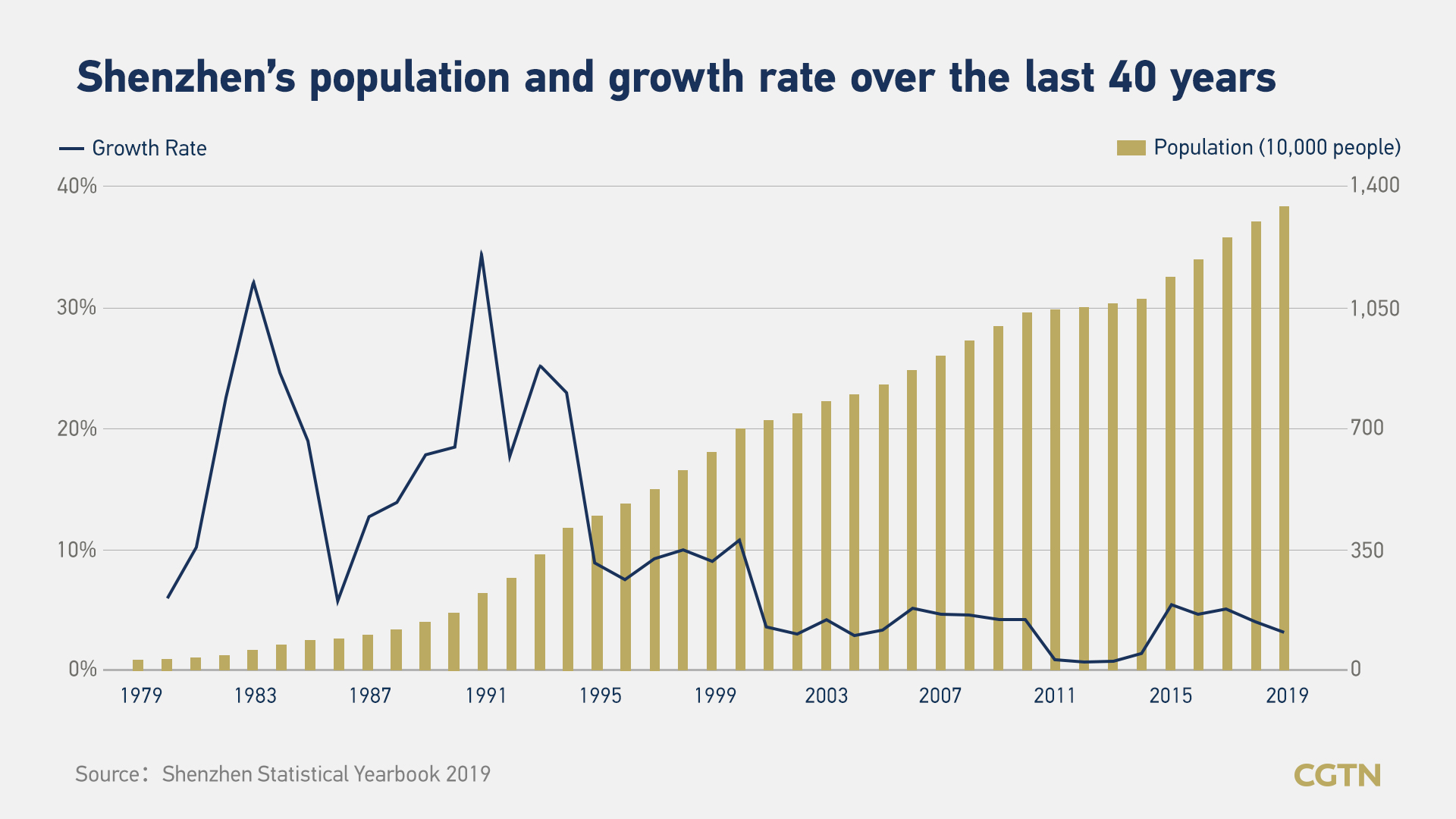Editor's note:
This year marks the 40th anniversary of Shenzhen being designated as China's first Special Economic Zone. Known as China's Silicon Valley, the city's take-off and eventual realization of economic wonder has coincided with the country's dramatic transformation.
CGTN made a series of reports to review the history of how the special zone was designed and founded, what achievements it has made, as well as the ambition it has for the future.
When Shenzhen was designated as China's first Special Economic Zone 40 years ago, the southern mainland city was struggling to meet basic daily needs. The unique development plan was initiated to offer better life for local residents but few could have expected for the tremendous achievements it has made in the four decades.
Shenzhen's rapid development since 1979 can be explained in four stages, according to a research published by UN Human Settlements Program in 2019.
In the first stage, from 1978 to 1992, Shenzhen worked on labor-intensive development supported by the national opening-up and institutional reforms, said the research titled "The Story of Shenzhen."
Thanks to the location, adjacent and connected to Southeast Asia and next to Hong Kong, the Pearl River Delta, Shenzhen was the first place in China to start the "business of three import and compensation trade", a shorthand for enterprises processing imported raw materials, manufacturing products according to imported samples, assembling imported parts and those that repay loans for imported equipment and technologies with products.
Apple's supplier Foxconn, founded its first factory in Shenzhen in 1988, producing computer parts.
Based on the capital and manufacturing experience made in the first stage, Shenzhen moved forward to the second stage from 1992 to 2003, when the city reached the lower-middle position in the global value chain, with a focus on capital-intensive development.
With China introduced market economy to replace planned economy, Shenzhen attracted more foreign direct investment and gradually transferred to electronic and information industries.
Shenzhen became the hub of world's telecommunications devices supply.
In 2012, the manufacturing of telecommunication devices, computer and other electronic devices accounted for 56.1 per cent of the gross industrial output, above the designated size.
From 2003 to 2013, Shenzhen graduated to the middle of the global industrial value chain with private high-tech business formed clusters.
In 2010, Huawei Technology Co, which was founded in 1987 in Shenzhen, made into the Fortune Global 500 for the first time.
The rapid development can be easily shown from Shenzhen's GDP growth. In 2000, Shenzhen ranked No. 4 among all China's major cities, and after that it became widely acknowledged as one of China's Tier-1 cities (other three are Beijing, Shanghai and Guangzhou).

After 2013, Shenzhen successfully reached highest echelon of the global industrial value chain.
Backed by many leading tech companies, such as Internet giant Tencent, the city has transformed into a tech hub for Asia.
Last year, the number of Shenzhen's patent application topped among all major cities in China, accounting for 6.23 percent of all applications made in the whole country.
Both manufacturing and innovation require rich human resources, another advantage Shenzhen has had and continue to work on.

Job opportunities have attracted people inflow since the Special Economic Zone was founded. Population of the city has surged to more than 13.43 million at the end of 2019, compared with 0.33 million four decades ago.
Dubbed as China's "Silicon Valley", Shenzhen was the youngest city in the country with an average age of 32.5 years old.
Right before the 40th year anniversary, Shenzhen received another precious endorsement – China designated Shenzhen as the country's first "pilot demonstration area of socialism with Chinese characteristics", a special status to carry out bolder reforms as a model for other cities.
Being the country's test bed for market reform with tremendous achievements, Shenzhen is fully aware of how to take the opportunity offered by favorable policy.
With the national pilot area plan to make the city a leader in terms of innovation, public service and environmental protection by 2025, Shenzhen has vowed to be a leading city on global level, especially with focus on technology infrastructure.
One year after being taken as the pilot demonstration area, Shenzhen announced in August that its had deployed 46,480 5G base stations, becoming the first city in the world to achieve full-scale 5G deployment.